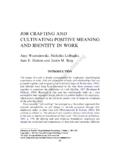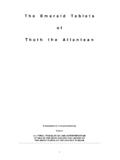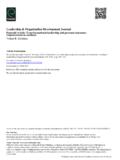Transcription of Frequently Asked Questions Regarding Potential Side ...
1 Asked Questions Regarding Potential Side Effects of Systemic Insecticides Used To Control emerald Ash BorerJeffrey Hahn, Assistant Extension Entomologist, Department of Entomology, University of MinnesotaDaniel A. Herms, Professor, Department of Entomology, Ohio Agricultural Research and Development Center, The Ohio State University Deborah G. McCullough, Professor, Department of Entomology and Department of Forestry, Michigan State UniversityWhat systemic insecticides are commonly used to protect ash trees from emerald ash borer (EAB)?Systemic insecticides containing the active ingredients imidacloprid, dinotefuran or emamectin benzoate are commonly used to protect ash trees from EAB.
2 All three are registered for agricultural use and have been designated by the Environmental Protection Agency as Reduced-Risk insecticides for certain uses on food crops. The most widely used insecticide in the world, imidacloprid has been utilized for many years to control pests of agricultural crops, turfgrass, and landscape plants. Because of its low toxicity to mammals, it is also used to control fleas and ticks on pets. Dinotefuran is a relatively new product that has properties similar to those of imidacloprid, but it has not been researched as thoroughly. Emamectin benzoate, derived from a naturally occurring soil bacterium, has been registered for more than 10 years as a foliar spray to control pests in vegetable and cotton fields and parasitic sea lice in salmon aquaculture.
3 Similar products are used in veterinary medicine as wormers for dogs, horses, and other animals. To control EAB, some products containing imidacloprid or dinotefuran are applied as a drench directly to the surface of the soil or injected a few inches under the soil surface. Dinotefuran can also be applied by spraying the bark on the lower five feet of the trunk. Emamectin benzoate and specific formulations of imidacloprid are injected directly into the base of the tree trunk. Systemic insecticides are transported within the vascular system of the tree from the roots and trunk to the branches and leaves. This reduces hazards such as drift of pesticide to non-target sites and applicator exposure that can be associated with spraying trees with broad-spectrum insecticides, and has less impact on beneficial insects and other non-target organisms.
4 Many products registered for control of EAB can be applied only by licensed applicators. In all cases, the law requires that anybody applying pesticides comply with instructions and restrictions on the invasive emerald ash borer has killed millions of ash trees in North trees lining a street before (left) and after (right) they were decimated by systemic insecticides applied to the soil impact ground or surface water quality?Several surveys have been conducted in the United States and Canada to monitor imidacloprid in surface and groundwater. Results indicate that imidacloprid is rarely detected in surface water in agricultural or urban areas.
5 Similar monitoring studies have not been conducted with dinotefuran, which is more soluble in water. In the presence of sunlight, imidacloprid and dinotefuran are very unstable in water and degrade rapidly, which reduces their environmental risk to surface not exposed to light, imidacloprid and dinotefuran break down slowly in water, and thus have the Potential to persist in groundwater for extended periods. In surveys of groundwater, imidacloprid was usually not detected. When detected, it was present at very low levels, mostly at concentrations less than 1 part per billion (ppb) with a maximum of 7 ppb, which are below levels of concern for human health.
6 The detections have generally occurred in areas with porous rocky or sandy soils with little organic matter, where the risk of leaching is high and/or where the water table was close to the precaution should be taken to protect surface and groundwater from pesticide contamination. Trunk-injected insecticides pose little risk to ground and surface water when used as directed because the material is placed inside the tree. To protect groundwater, soil applications of systemic insecticides should be made immediately adjacent to the trunk of the tree, which increases uptake (and efficacy) because the high density of absorptive roots in this area filters the chemical from the soil.
7 Systemic insecticides bind to varying degrees to organic matter, silt, and clay, which restricts their movement in soil. They should not be applied to porous sandy soils lacking organic matter, especially where the water table is shallow, or when heavy rain is predicted within the next 24 hours. To protect surface water, systemic insecticides should not be applied to soil near ponds, lakes, or streams. Soil drenches should not be applied to sloped surfaces from which runoff can occur, nor should pesticides be misapplied carelessly to impervious surfaces such as sidewalks or streets, or otherwise allowed to reach conduits to surface water such as drains, ditches, or imidacloprid profile presented in the Extension Toxicology Network Pesticide Information concluded there is generally not a high risk of groundwater contamination when products are used as directed and appropriate precautions are taken.
8 Similarly, the Canadian Water Quality Guidelines for the Protection of Aquatic Life noted that when imidacloprid is used correctly, it does not characteristically leach into deeper soil these insecticides impact aquatic organisms?The toxicity of imidacloprid to aquatic life varies. Studies indicate it has low toxicity to fish, amphibians, and some aquatic invertebrates such as Daphnia (small aquatic crustaceans), but high toxicity to other invertebrates such as mysid shrimp (a salt water species) and larvae of some aquatic insects such as midges, black flies, and mosquitoes. Dinotefuran is not as thoroughly researched, but existing data reflect a pattern of toxicity similar to that of imidacloprid.
9 Toxicity to fish and Daphnia is low, while mysid shrimp are sensitive. As previously noted, imidacloprid and dinotefuran are broken down rapidly in water when exposed to light. In the rare occasions when imidacloprid has been detected in surface water, the levels were too low (less than 1 ppb) to impact even sensitive aquatic soil injections have been widely used in ravines of Smoky Mountain National Park and other forested areas to control hemlock woolly adelgid, an invasive insect that is devastating hemlock trees in the Appalachian Mountains. A risk assessment prepared for the USDA Forest Service ( Imidacloprid Human Health and Ecological Risk Assessment ) concluded that these treatments pose negligible risk to aquatic organisms when applied as directed to clay or loam soils, and that even a worst-case scenario of a major spill of imidacloprid into a small pond would have negligible effects on fish, amphibians, or tolerant aquatic invertebrates.
10 When used as directed, imidacloprid soil treatments for EAB control are unlikely to impact aquatic organisms. Precautions should be taken to prevent pesticides from reaching surface or about insecticide residues in senesced leaves that fall from trees in autumn?This question has not been thoroughly researched. One study conducted in experimental microcosms found that imidacloprid residues in senesced (dead) leaves from treated trees had no effect on microbial respiration or decomposition, or survival of leaf-shredding insects that decompose dead vegetation. Insect feeding rates were decreased by imidacloprid concentrations of parts per million (ppm), while lower concentrations ( ppm) had no effect.






